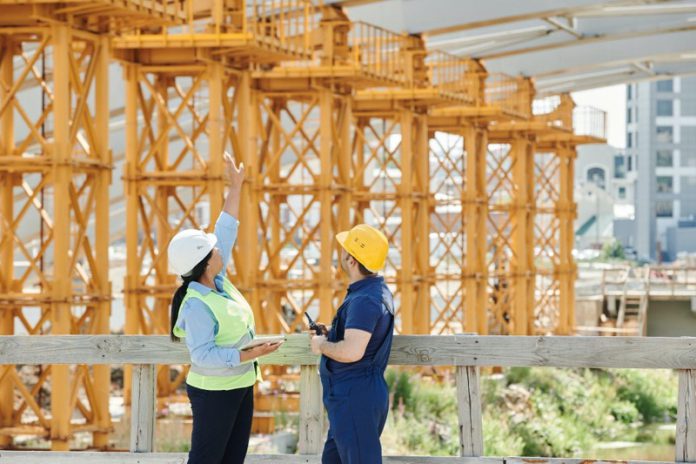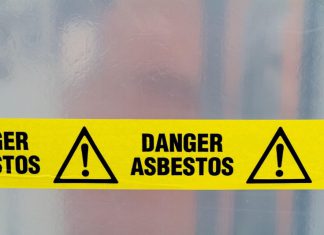As a group of naturally occurring fibrous minerals, asbestos was widely used in the construction industry and various other applications due to its remarkable properties, including heat resistance and durability. Unfortunately, over time, the hazards associated with asbestos exposure have become apparent, leading to a wave of regulations and efforts to remove it from workplaces. This article explores the dangers of asbestos in the workplace and the crucial steps necessary for its safe removal to protect workers’ health and well-being.
Asbestos-related illnesses, such as mesothelioma, lung cancer, and asbestosis, can take decades to manifest after initial exposure. Inhalation of asbestos fibers is the primary route of exposure, typically occurring during activities that disturb asbestos-containing materials (ACMs). Common sources of asbestos in workplaces include insulation, ceiling and floor tiles, pipe insulation, roofing materials, and fireproofing materials. When disturbed, these materials release tiny asbestos fibers into the air, which can be easily inhaled by workers.
Workers exposed to asbestos are at significant risk of developing debilitating and life-threatening diseases. Mesothelioma, a rare and aggressive cancer that affects the lining of the lungs, abdomen, or heart, is almost exclusively caused by asbestos exposure. Lung cancer and asbestosis are also prevalent among individuals who have worked in asbestos-contaminated environments. Asbestos fibers, once lodged in the lungs, cannot be expelled, leading to chronic inflammation and scarring over time.
In response to the alarming health risks, many countries have enacted stringent regulations regarding the handling and removal of asbestos in workplaces. These regulations mandate employers to assess asbestos-containing materials, establish proper management plans, and ensure the safe removal of asbestos when necessary. Additionally, guidelines for personal protective equipment (PPE) and worker training have been put in place to minimize the risk of exposure.
How to Remove Asbestos in the Workplace Safely
Asbestos Assessment and Identification: Before any removal work begins, employers must conduct thorough assessments to identify asbestos-containing materials. This process involves inspections and laboratory analysis to determine the presence and quantity of asbestos fibers.
Certified Abatement Contractors: Asbestos removal is a highly specialized task that requires skilled professionals. Certified asbestos abatement contractors possess the necessary training and expertise to handle asbestos safely. Hiring qualified contractors ensures that the removal is conducted according to regulations and industry best practices.
Developing a Removal Plan: A comprehensive removal plan is vital to minimize exposure risks. It should outline the scope of work, safety measures, containment procedures, waste disposal strategies, and a clear timeline for completion.
Worker Protection: All workers involved in the removal process must be equipped with appropriate PPE, such as respirators, gloves, coveralls, and eye protection. Proper training in handling asbestos-containing materials and emergency response procedures is essential.
Containment and Air Monitoring: The removal area must be isolated and contained to prevent asbestos fibers from spreading to other parts of the workplace. Continuous air monitoring is crucial to verify that asbestos levels remain below permissible exposure limits.
Proper Removal Techniques: Wetting ACMs before removal helps to minimize fiber release. Specialized tools and methods, such as wet stripping and gentle removal, should be employed to avoid generating dust.
Waste Disposal: Asbestos waste should be double-bagged in approved containers and labeled appropriately. Disposal must follow local regulations and be performed at licensed facilities equipped to handle hazardous materials. Read here to know more.
Without competent assistance, you run the danger of violating one among the many asbestos-related regulations and incurring hefty fines or penalties.
To properly remove contaminated protective gear and equipment, experts must adhere to a set of guidelines. These protocols guarantee worker security and stop workers from bringing asbestos into their residences.
Why You Should Never Attempt to Remove Asbestos Yourself
Lack of Expertise: Asbestos removal is a highly specialized task that requires training, experience, and knowledge of proper handling procedures. Without adequate expertise, attempting removal can lead to significant exposure risks, both for yourself and others in the vicinity.
Health Hazards: Disturbing asbestos-containing materials without proper precautions can release a high concentration of asbestos fibers into the air. These fibers can linger in the environment for extended periods, posing an ongoing health threat to anyone who comes into contact with the contaminated area.
Legal Consequences: Many countries have strict regulations regarding asbestos removal due to its health risks. Attempting to remove asbestos without the required certifications and permits can lead to severe legal repercussions and fines.
Inadequate Protective Measures: Removing asbestos without the necessary protective equipment can result in direct exposure to hazardous fibers. Asbestos fibers can easily attach to clothing and skin, increasing the risk of secondary exposure to family members and others in contact with the person attempting the removal.
The Safe and Responsible Approach
Asbestos Inspection: If you suspect the presence of asbestos in your home or workplace, the first step is to arrange for a certified inspector to conduct a thorough assessment for safe asbestos removal. This inspection will identify the location and condition of asbestos-containing materials.
Certified Asbestos Abatement Contractors: If the inspection confirms the presence of asbestos, hire a certified asbestos abatement contractor to handle the removal. These professionals are equipped with the necessary training, tools, and safety protocols to ensure safe and compliant asbestos removal.
Compliance with Regulations: Professional asbestos removal contractors are well-versed in local regulations and guidelines governing asbestos removal. Hiring a certified contractor ensures that the removal process is legally compliant, minimizing the risk of legal issues and penalties.
Proper Containment and Disposal: Certified contractors will establish proper containment measures to prevent asbestos fibers from spreading during the removal process. They will also dispose of asbestos waste following strict protocols and regulations.
Peace of Mind: By entrusting the removal to professionals, you gain peace of mind knowing that the process is being handled safely and responsibly, protecting the health of yourself, your family, and those around you.
The dangers of asbestos exposure cannot be overstated, and attempting to remove asbestos yourself is a decision fraught with risks. Protecting yourself, your loved ones, and others in your community requires responsible action. Always engage certified professionals for asbestos inspection and removal to ensure the safety and well-being of everyone involved. By adhering to this essential reminder, we can collectively contribute to a safer environment, free from the dangers of asbestos.
















